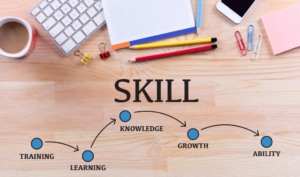
To Handle Today’s Workplace, HR Goes Agile
Does culture eat strategy for breakfast? Maybe if it’s agile. When it comes to organizations, there’s a perpetual dance between stability and agility. No question,

Does culture eat strategy for breakfast? Maybe if it’s agile. When it comes to organizations, there’s a perpetual dance between stability and agility. No question,

AI has become a readily available tool for employers with a spectrum of high value use cases, including risk management. A recent poll showed that

Sponsored by Fama Technologies We have likely all had the experience of a bad hire. For some of us, horror stories come to mind. Finding

Longtime CHRO Ellyn Shook announced her retirement, sharing 3 key observations about her changing role. A recent C-Suite survey proves her right. This July, Ellyn

The days of HR focusing solely on personnel management and administrative duties are long gone. Now, as organizations step fully into the digital era, the

In today’s ever-shifting talent landscape, companies large and small are searching for more effective ways to attract, recognize, and retain their workforce. These opportunities come

EDITOR’S NOTE: This is the last article in a 4-part series sponsored by Unit4. The series outlines a new approach to talent strategy for people-centric

Sponsored by: ADP Employers are looking for new ways to stand out in terms of employee perks and benefits. One solution: earned wage access (EWA).

Sponsored by: ThoughtExchange For several months, we’ve been sharing insights from our partner ThoughtExchange. They’ve done some fascinating research on Gen Z employees, employee experience,

Sponsored by: Empath In today’s world of work— agility matters — and how we enable our own employees to meet our company goals, is vital.

Sponsored by: RocketReach Recruiting challenges face every organization — one that is particularly daunting for smaller companies and fast-growing startups. As agility is often a

When it comes to the workplace, happiness is key. Studies have shown that happy employees are more productive and efficient. That’s why employers need to

Is the benefits information you have to tell employees important before and during Open Enrollment? You bet! Easily understood? Not always. According to the latest

Sponsored by: Nationwide With 2022 shaping up to be much more economically challenging for many people, more so than in 2021, folks are doing what

The Great Resignation has highlighted the importance of employee retention, but do you know which employees you need to engage the most? What should managers

The Great Resignation. The Big Quit. The Lie-Flat economy. The Great Reshuffle. The Great Rift. Whatever you want to call it, the way human beings

Benefits are one of the key pillars of good employee retention. According to data compiled by LinkedIn in 2020, “better compensation and benefits” was one

Gone are those days when people used to travel to their workplaces. According to a Pew Research report, about one-fifth of workers having the flexibility to

If you’re in HR, no matter your role, you have complex messages to communicate to employees. You also likely have a hard time getting them

Pandemic-related mental health is undoubtedly top-of-mind. In addition, there tends to be an uptick in dialog about mental health this time of year because May

Sponsored by: Cristaux International Kids are known for complaining when things aren’t fair. Although professional adults may not be as obvious as children, they do

Sponsored by: Cornerstone Learning is the most important thing we do at work. I know that’s a bold statement. I’m sure you’re already trying to

The Great Resignation was a very real and present concern for HR professionals in 2021. In December alone, 4.3 million workers left their jobs. As the

Podcast Sponsored by: QuantumWork Advisory According to McKinsey, the pandemic has accelerated existing trends in remote work, e-commerce, and automation. As a result, up to

What are some ideas to make mental health support more accessible to employees? This question was posed to a group of talented professionals for their